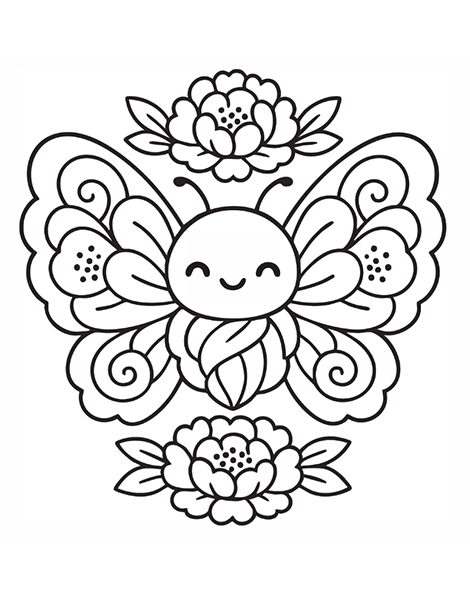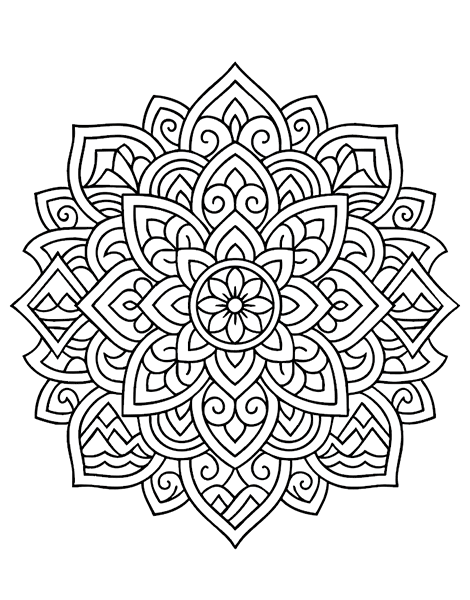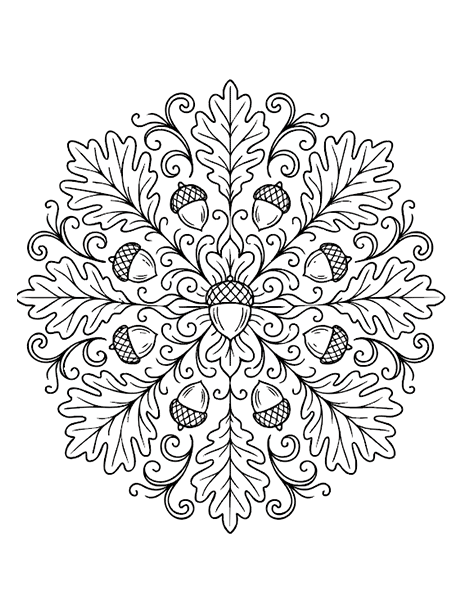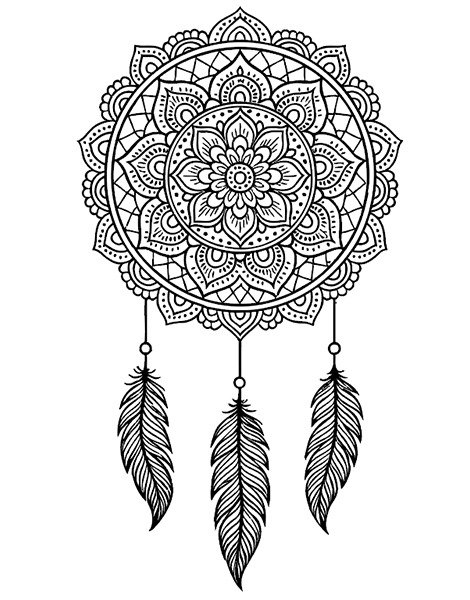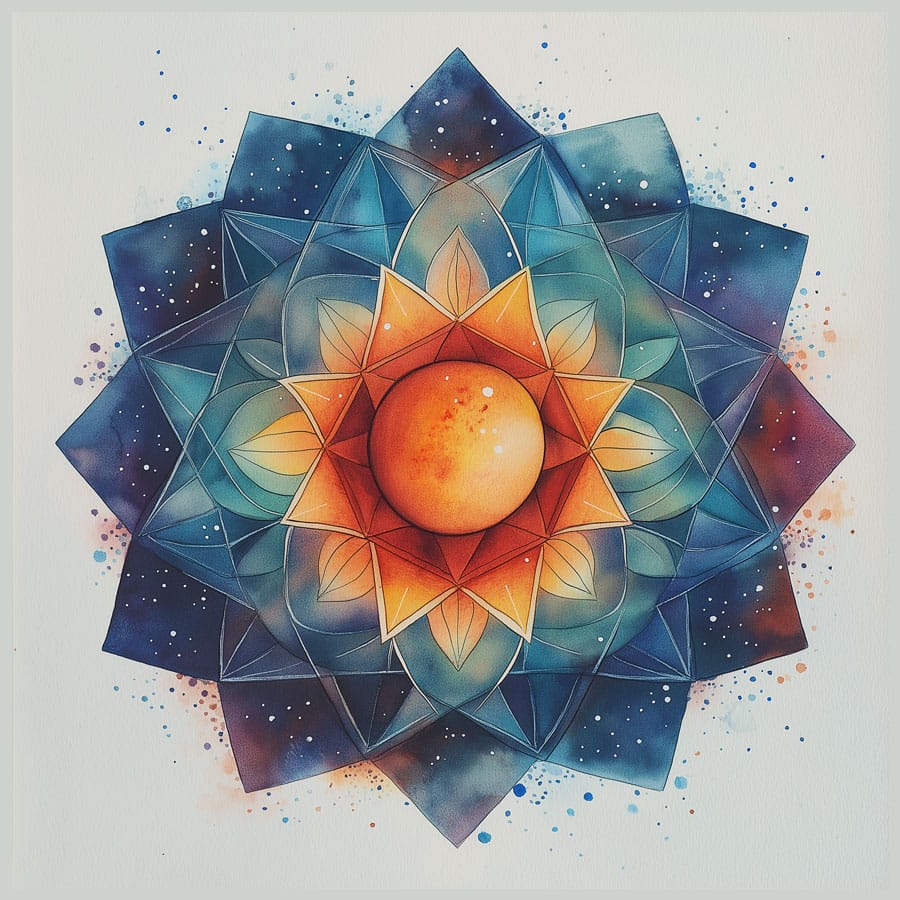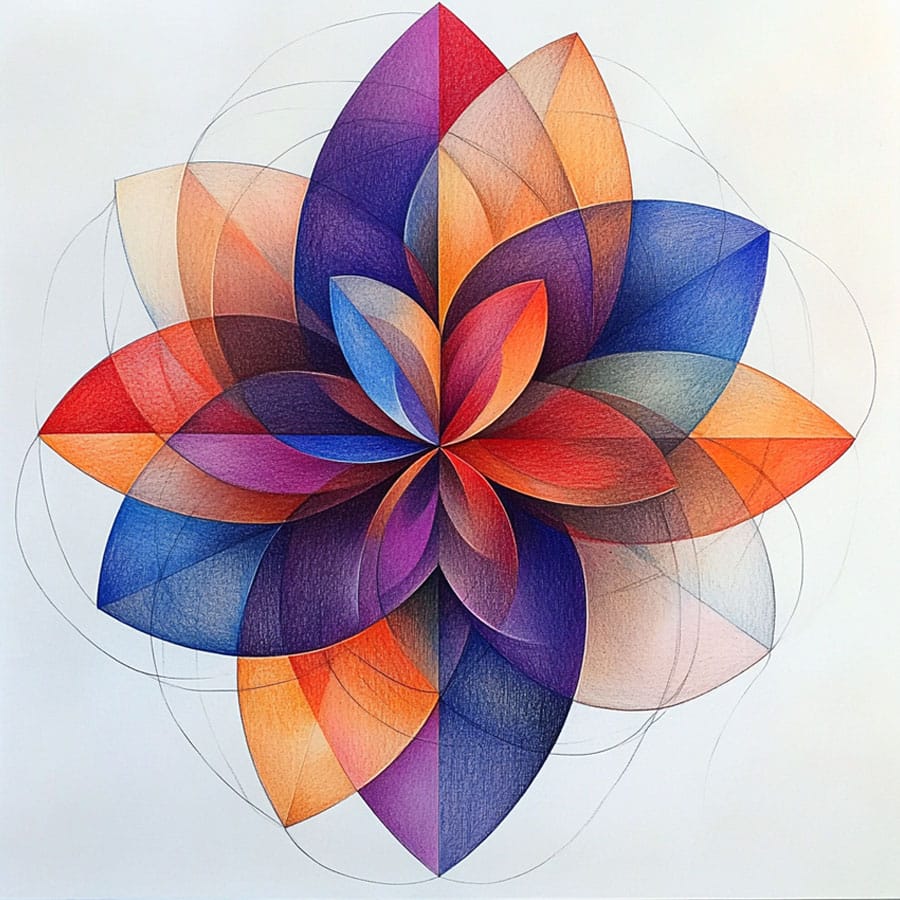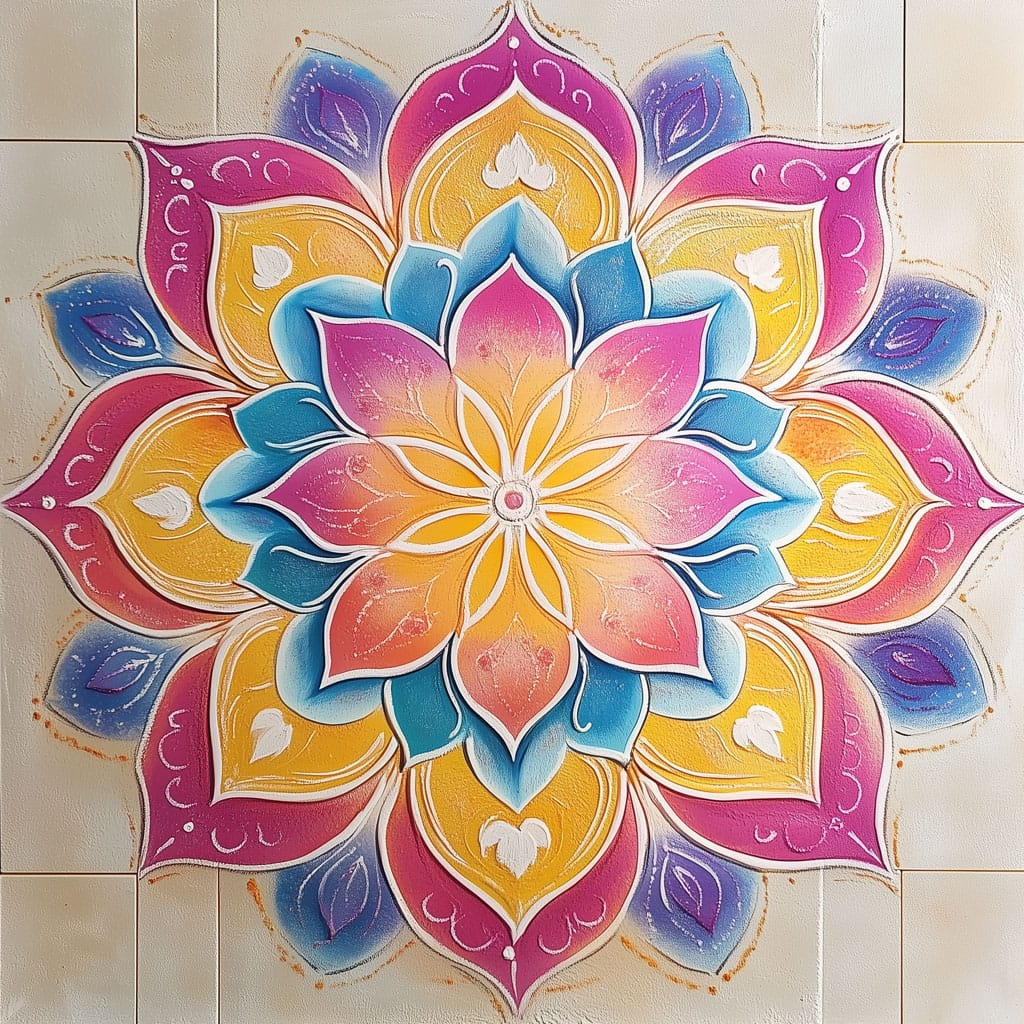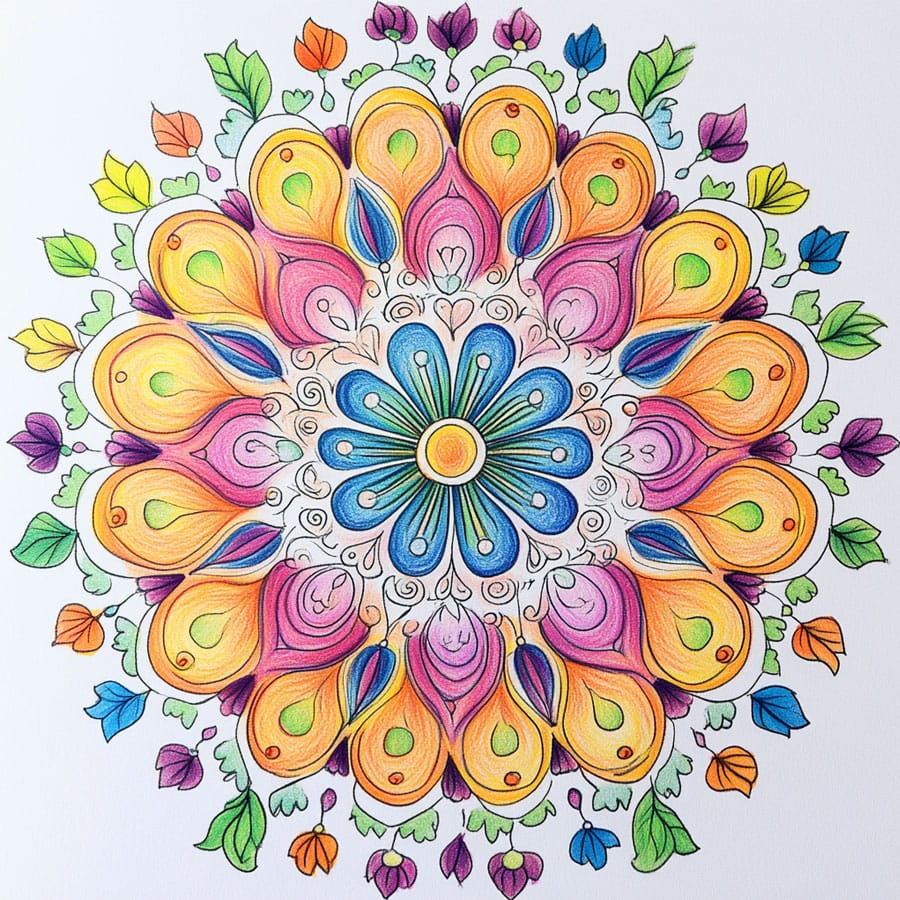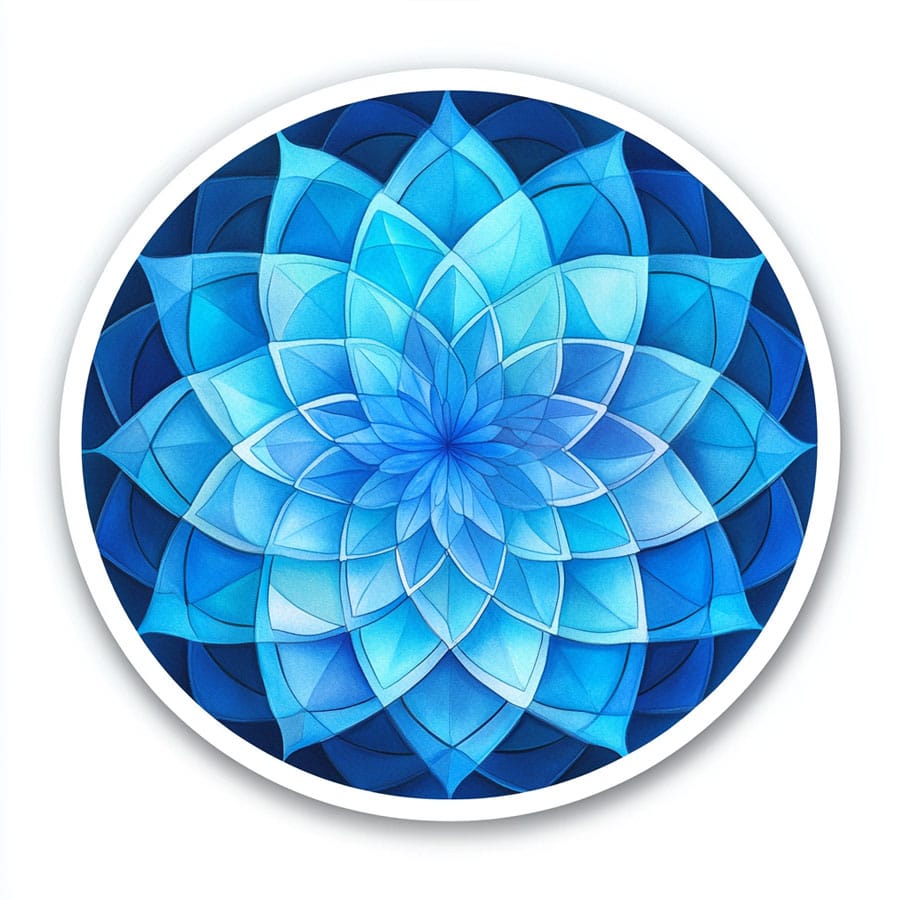Guide to coloring the geometric mandala:
This type of mandala is based on radial symmetry and repetitive patterns. To highlight it, follow these steps:
Observe the overall design: Before starting, identify the repeated patterns. As it’s a modular design, coloring each section consistently emphasizes the sense of unity and harmony.
Choose a color palette: Opt for a color scheme that inspires calmness, such as cool tones (blues, greens, and purples), or a more energetic one, like warm tones (reds, oranges, and yellows). You can also combine both ranges to create contrast.
Divide the mandala into levels:
Color the central shapes first, using darker shades to add depth.
For outer patterns, apply lighter colors to create a visual expansion effect.
Highlight small details: Use fine-tipped colored pencils or markers for narrower spaces. This helps avoid coloring outside the lines and keeps the design clean.
Experiment with gradients: Apply variable pressure with pencils to create smooth transitions between colors. This technique adds volume and dynamism to the mandala.
Add shadows and outlines: Use darker shades on the edges to create depth, or highlight with metallic or bright tones for a more striking visual effect.
Therapeutic importance:
Coloring this type of mandala can induce a state of active meditation. The symmetry and repetitive patterns help focus the mind and release stress. They also stimulate creativity, improve fine motor coordination, and strengthen patience.
This mandala invites reflection on the connection between the inner order and the outer world. Its geometric structure symbolizes balance and harmony, which can be interpreted as a reminder of the importance of maintaining emotional and mental stability.

